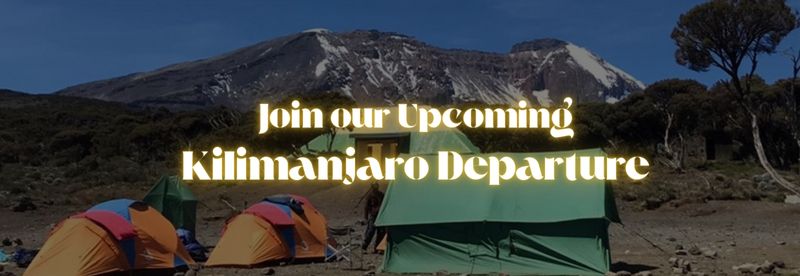Kilimanjaro Trek for Beginners: Is It Doable Without Experience?
Mount Kilimanjaro often stands tall in the dreams of adventurers across the globe — even those who’ve never laced up hiking boots before. At 5,895 meters (19,341 feet), it’s the highest free-standing mountain in the world. But the big question remains:
Can a beginner — someone with no prior trekking or mountaineering experience — actually summit Kilimanjaro?
The short answer: Yes!
But you’ll need preparation, the right mindset, and a little respect for the altitude.
Why Kilimanjaro Is Beginner-Friendly
One of the most appealing aspects of Kilimanjaro is that it’s a non-technical trek. That means:
- No ropes or climbing equipment required
- No mountaineering experience necessary
- You’ll be hiking, not rock climbing
Guides and porters carry your heavy gear, set up camp, and support you every step of the way — literally
What Make Kilimanjaro Challenging?
Though it’s “just a walk,” don’t be fooled. Several factors make Kilimanjaro a serious undertaking:
- Altitude: The biggest challenge is trekking at high elevation, where oxygen levels drop significantly.
- Weather: Conditions can vary from tropical rainforests to freezing temperatures at the summit.
- Endurance: Treks last between 5 to 9 days, depending on the route. It’s mentally and physically demanding.
What Make Kilimanjaro Challenging?
Choosing the right route can dramatically increase your chances of success:
- Lemosho Route (7-8 days): Excellent for acclimatization and scenic variety
- Machame Route (6-7 days): Popular and beautiful, but more physically demanding
- Marangu Route (5-6 days): Offers hut accommodation; less strenuous but lower success rate
Tip: Longer routes = more acclimatization = higher chance of summiting.
How to Prepare as a Beginner
1. Start Training Early
You don’t need to be an elite athlete, but you should start hiking regularly 2–3 months before your trek. Focus on:
- Building endurance (long hikes)
- Strength training (legs and core)
- Cardio (stair climbs, jogging)
2. Test Your Gear
Break in your boots. Try your daypack on weekend hikes. You don’t want surprises on the mountain.
3. Mental Prep Is Key
Many trekkers say mental strength matters as much as physical fitness. You’ll face long days, basic toilets, and tough summit night conditions — staying positive helps immensely.
What to Expect Day to Day
Most itineraries follow a gradual ascent with built-in acclimatization days. Each day includes:
- 4–7 hours of trekking at a slow pace (“pole pole” in Swahili)
- Breaks for meals, hydration, and acclimatization
- Nights in tents or mountain huts
Your guide team keeps you safe, motivated, and well-fed throughout.
Summit Night: The Ultimate Test
On the final push to Uhuru Peak, you’ll start trekking around midnight under starlit skies. It’s cold, dark, and steep — this is where your training, mindset, and motivation matter most. But watching the sunrise from the Roof of Africa? Unforgettable.
Is It Worth It? Absolutely.
Thousands of first-time trekkers reach the summit every year. With proper planning, a reliable trekking company, and determination, you can too.
Final Thoughts: Should You Do It?
If you’re a beginner considering Kilimanjaro, ask yourself:
- Are you willing to train and prepare?
- Can you commit to being outdoors and uncomfortable at times?
- Do you have the drive to push through challenges?
If yes — then Kilimanjaro is not only possible, it’s the adventure of a lifetime waiting for you.

